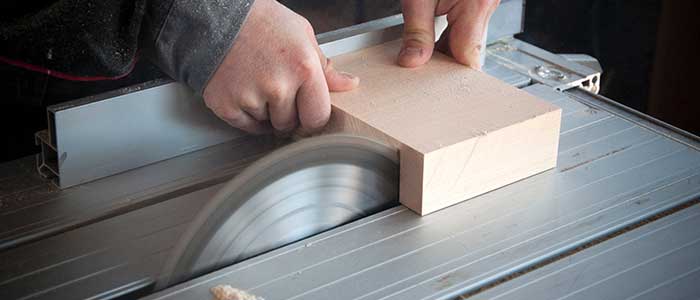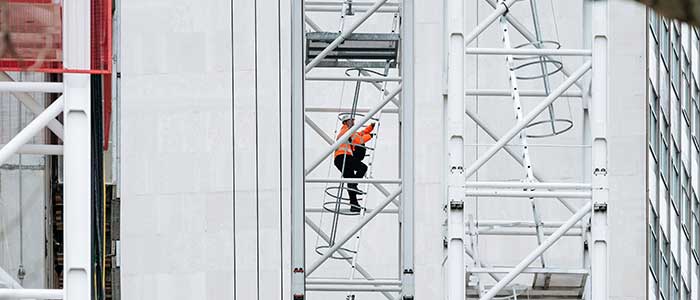Concrete Cutting Safe Work Method Statement SWMS
Start with a free 30-day trial. No credit card required.

~10,000 employees
~500 employees
~25,000 employees
~20 employees
~50 employees
~1,500 employees
~20 employees
What is a Concrete Cutting Safe Work Method Statement?
A Concrete Cutting Safe Work Method Statement (SWMS) enables the company, projects and teams to document and outline the standard procedures and controls put in place to manage the hazards and dangers of concrete cutting (and a lot of cutting in general).
Preview this Concrete Cutting Safe Work Method Statement below for yourself
Use this Concrete Cutting Safe Work Method Statement template for free.
What are the general contents of a Concrete Cutting Safe Work Method Statement?
Most Concrete Cutting Safe Work Method Statements follow their formatting with some common contents, depending on the company's preferred structure. Also, It's important to note that Safe Work Method Statement (SWMS) is specifically used in Australia only. Remember:
- In Australia, a SWMS is legally required as per Work Health and Safety (WHS) Regulations
- In New Zealand, they also follow the WHS Regulations, but don't specifically use the SWMS terminology.
- Other countries have their own similar systems, but don't exactly use the exact SWMS terminology.
The Australian government mandates certain content and is strict with using plain and clear language to be digestible for regular workers, but they aren't overly strict with the template as long as they contain:
- High Risk Construction Work (HRCW) Identification: meaning that if any of the job/work falls in the categories (18) as laid out by the WHS Regulations, then there must be a well-documented Concrete Cutting SWMS.
- Hazards/Risk Identification & Control measures: hazards must be identified that are specific to the task, and control measures for each hazard.
- Work step-by-step breakdown (pre, during, and after)
- Roles and responsibilities: who will implement, monitor, and review the SWMS
How does SWMS improve safety for concrete cutting?
Concrete cutting comes with some serious hazards like equipment mishandling, flying debris, excessive noise, high-powered saws, and exposure to harmful particles like airborne silica dust. These could lead to injuries, long-term issues, or fatal incidents if there aren't any proper measures in place, so a SWMS fully dedicated to concrete cutting should be there to ensure that everyone understands and approaches concrete cutting in the safest way possible.
Concrete cutting can be a hazardous activity for a number of reasons, and rapidly spinning blades and other parts of the process can cause serious issues to workers. If the company, for some reason, doesn't implement proper precautions, then the workers will definitely face these risks at the expense of their safety and health. Lacerations, kickbacks, and physical injuries are already bad enough, workers are also exposed to harmful dust particles which result into long-term respiratory issues.
Instead of just leaving the workers to face the risks in concrete cutting, organisations and companies have the moral responsibility to at least enforce SWMS and create structured plans and safety policies to keep the risks under control. It's really more than just a compliance requirement because it lays out what workers should do before, during, and after cutting. Instead of leaving safety to chance, it's best to invest in a proper Concrete Cutting Safe Work Method Statement, protect the team, and enforce that safety is a non-negotiable priority.
How to determine if a Work Method Statement (SWMS) is needed?
As mentioned, a SWMS is specific to Australia only and organisations are mandated to create one if they fall under the categories of High-Risk Construction Work (HRCW). So do all concrete cutting works require a SWMS? Not all. How can we know then?
Here's to make things easier to digest, if any of the following apply to your concrete cutting activity, then you need to create a Concrete Cutting Safe Work Method Statement:
- If your concrete cutting is done near electrical cables, there are high chances of electrocution. Draft one that focuses on safety measures to avoid electrocution.
- If your concrete cutting is in or near pressurised gas mains or piping, then focus the safety protocols in avoiding hitting the gas and water pipes.
- If your concrete cutting is in an excavation, trench, or pit (at least 1.5 m below) then make a SWMS that addresses the risk of possibly hitting underground services. Working in excavations also means the workers have limited exit options, so there should be proper emergency response plans as outlined in the SWMS for that.
- If the concrete cutting is done on precast concrete, then you need a SWMS to address the possibility of unexpected collapses or movement and working at height risks.
- If the concrete cutting is done as part of a demolition work of a structure at least 6 meters tall, then you need SWMS to address working at heights, of using cranes, possible collapses, and more.
Other popular templates you can use and customise for free

SWMS for carpentry
Keep workers performing carpentry work safer, and all of your SWMS for carpentry records more organised using this

SWMS for working at heights
Reduce the likelihood and consequences associated with terrible working at heights incidents by better managing and communicating your SWMS

Job safety analysis
This JSA structure makes your JSA's easier to complete, share and keep organise so everyone performs their jobs more safely
This Concrete Cutting Safe Work Method Statement was generated with Dashpivot
Streamline how you manage SWMS while becoming more safety compliant:
- Acknowledge and sign off on the SWMS using a digital signature, so no records ever get lost or misplaced.
- Collaborate on a single online SWMS document so that everyone is always working off and referencing the same latest version.
- Completely customise the pre-built concrete cutting SWMS to suit your wants, needs and processes.
- Download, print or share any of your SWMS documents in a couple of clicks.
Sitemate builds best-in-class software tools for built world companies.











